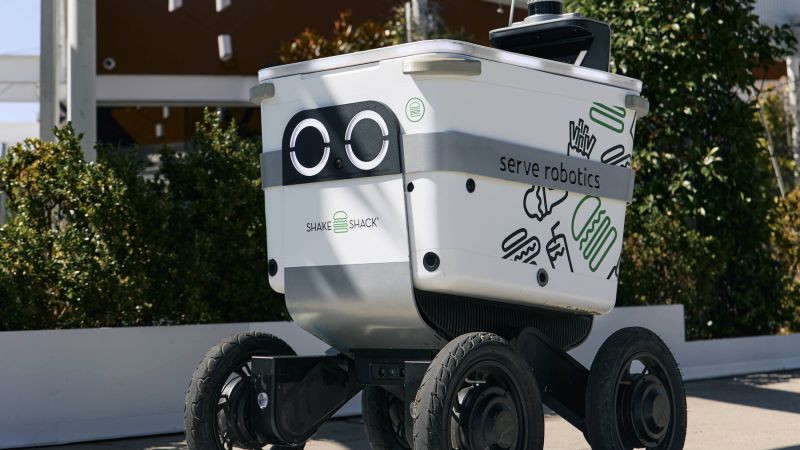Shake Shack in Los Angeles has announced a partnership with Serve Robotics to deliver meals through autonomous robots via the Uber Eats app. The robots, shaped like shopping carts with four wheels, will travel on sidewalks. Serve Robotics was initially founded as the robotics division of Postmates before being acquired by Uber and spun off in 2021. The company went public in 2024 and has investors like Nvidia and 7-Eleven. Serve robots have been delivering food in LA since 2022, with the typical delivery taking about a mile to complete. CEO Ali Kashani stated that robots are better suited for city deliveries than driverless cars, as they reduce congestion, emissions, accidents, and lower costs for merchants.
Despite challenges, investors are optimistic about the future of automated delivery services. Companies like Uber have previously partnered with Cartken to launch robot delivery services in Miami and Fairfax. While some forms of automation, like drone delivery, have not fully taken off, investors continue to support the concept. Domino’s tried out a pizza delivery robot in 2021 but still relied on human delivery drivers. Serve Robotics aims to roll out 2,000 robots on the Uber Eats platform in 2025, despite currently having a fleet of only 100 robots. The company is looking to expand to cities like Dallas, San Diego, and Vancouver, Canada.
Servicing a bustling city like Los Angeles poses challenges such as crowded sidewalks and potential theft. Despite this, Serve’s robots successfully complete deliveries over 99% of the time. The company is considering ways to overcome these challenges and expand to other cities. As labor costs rise and consumers face higher prices when eating out, Serve Robotics claims that their robots can increase efficiency and lower costs for merchants. One advantage touted by Serve is that there is no need to tip the delivery robot, which can be appealing to customers.
While the future of automated deliveries holds promise, there are still obstacles to overcome. Companies and investors are eager to explore new technologies like autonomous robots for delivery services, but the reliance on human workers remains necessary in certain situations. As companies like Serve Robotics continue to innovate and expand their fleets, they are optimistic about the potential for growth and success in the automated delivery industry. LA’s demanding environment and tourist-heavy streets present unique challenges for the delivery robots, but Serve is confident in their ability to navigate these obstacles and provide efficient service to customers in various cities.


